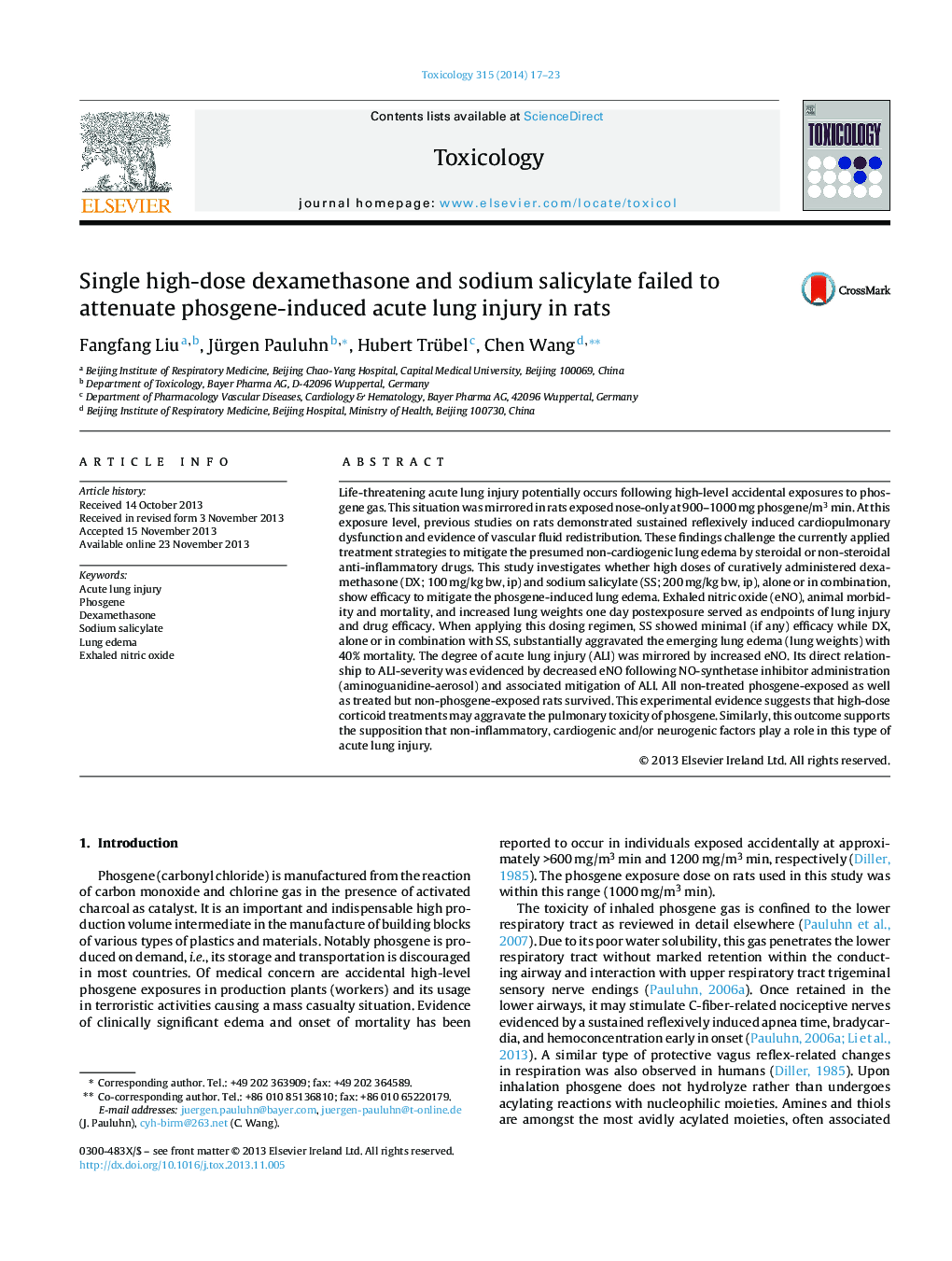| Article ID | Journal | Published Year | Pages | File Type |
|---|---|---|---|---|
| 5859280 | Toxicology | 2014 | 7 Pages |
Abstract
Life-threatening acute lung injury potentially occurs following high-level accidental exposures to phosgene gas. This situation was mirrored in rats exposed nose-only at 900-1000Â mg phosgene/m3Â min. At this exposure level, previous studies on rats demonstrated sustained reflexively induced cardiopulmonary dysfunction and evidence of vascular fluid redistribution. These findings challenge the currently applied treatment strategies to mitigate the presumed non-cardiogenic lung edema by steroidal or non-steroidal anti-inflammatory drugs. This study investigates whether high doses of curatively administered dexamethasone (DX; 100Â mg/kg bw, ip) and sodium salicylate (SS; 200Â mg/kg bw, ip), alone or in combination, show efficacy to mitigate the phosgene-induced lung edema. Exhaled nitric oxide (eNO), animal morbidity and mortality, and increased lung weights one day postexposure served as endpoints of lung injury and drug efficacy. When applying this dosing regimen, SS showed minimal (if any) efficacy while DX, alone or in combination with SS, substantially aggravated the emerging lung edema (lung weights) with 40% mortality. The degree of acute lung injury (ALI) was mirrored by increased eNO. Its direct relationship to ALI-severity was evidenced by decreased eNO following NO-synthetase inhibitor administration (aminoguanidine-aerosol) and associated mitigation of ALI. All non-treated phosgene-exposed as well as treated but non-phosgene-exposed rats survived. This experimental evidence suggests that high-dose corticoid treatments may aggravate the pulmonary toxicity of phosgene. Similarly, this outcome supports the supposition that non-inflammatory, cardiogenic and/or neurogenic factors play a role in this type of acute lung injury.
Related Topics
Life Sciences
Environmental Science
Health, Toxicology and Mutagenesis
Authors
Fangfang Liu, Jürgen Pauluhn, Hubert Trübel, Chen Wang,
